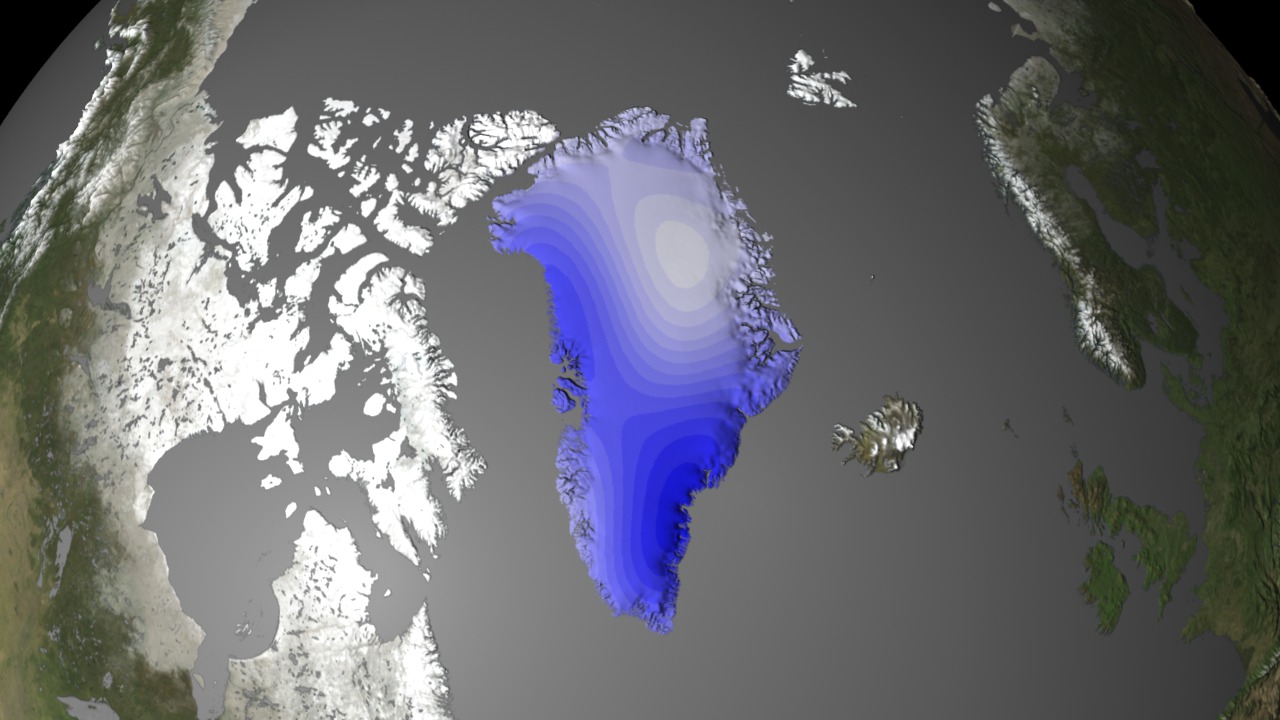The Biggest Losers
Giant ice sheets cover Antarctica and Greenland, holding 99 percent of the world's freshwater ice. But the ice sheets are giving up this water, as glaciers accelerate their journey to the sea and warmer air and ocean currents melt the ice. Orbiting 300 miles above Earth, NASA's twin GRACE (Gravity Recovery and Climate Experiment) satellites measure precisely how much these ice reservoirs are contributing to sea level rise. Measurements show Antarctica and Greenland are shedding roughly 385 billion tons of ice each year—that's more than 10 times the annual ice losses from Himalayan glaciers. This is causing global ocean waters to rise by about 0.04 inches each year. Watch the visualization below to see how the ice masses covering Greenland and Antarctica changed from 2003 to 2010.

The largest sources of sea level rise are losing weight, fast.
Ice losses in Antarctica are concentrated on its western coast, while Greenland's thawing has spread from the south to the northwest since 2005.

The ice sheet covering Antarctica is more than a mile thick in most places, but ice losses and gains vary widely across the continent.

Major ice losses on Greenland's coasts have been driven by rapid acceleration of "outlet" glaciers that empty ice into the ocean.

Increasing ice losses in West Antarctica, shown here, cause concern because a major portion of the ice sheet rests on bedrock below sea level.
For More Information
See NASA.gov
Credits
Please give credit for this item to:
NASA's Goddard Space Flight Center
-
Animator
- Cindy Starr (Global Science and Technology, Inc.)
-
Producers
- Alan Buis (NASA/JPL CalTech)
- Patrick Lynch (Wyle Information Systems)
-
Scientists
- John Wahr (Department of Physics and Cooperative Institute for Research in Environmental Sciences, University of Colorado at Boulder)
- Thomas Jacob (Department of Physics and Cooperative Institute for Research in Environmental Sciences, University of Colorado at Boulder)
- W. Tad Pfeffer (Institute of Arctic and Alpine Research/Environmental, and Architectural Engineering, University of Colorado at Boulder)
- Sean Swenson (National Center for Atmospheric Research, Boulder)
-
Project support
- James W. Williams (Global Science and Technology, Inc.)
-
Writer
- Maria-Jose Vinas Garcia (Telophase)
Release date
This page was originally published on Tuesday, April 17, 2012.
This page was last updated on Wednesday, May 3, 2023 at 1:53 PM EDT.
Missions
This page is related to the following missions:Datasets used
-
[Gravity Recovery and Climate Experiment (GRACE)]
ID: 221
Note: While we identify the data sets used on this page, we do not store any further details, nor the data sets themselves on our site.
